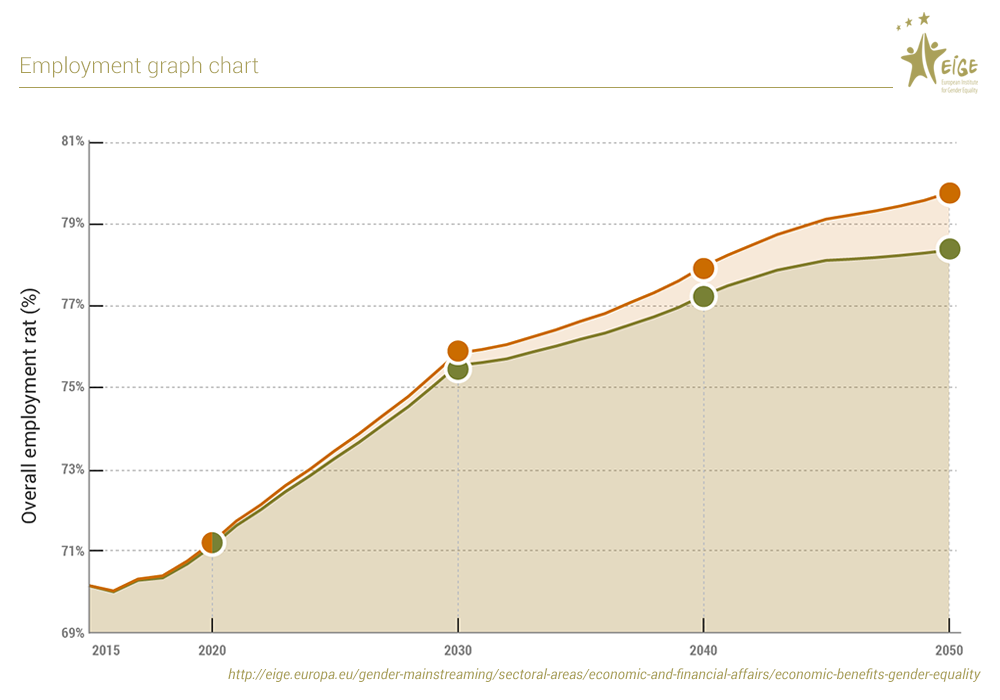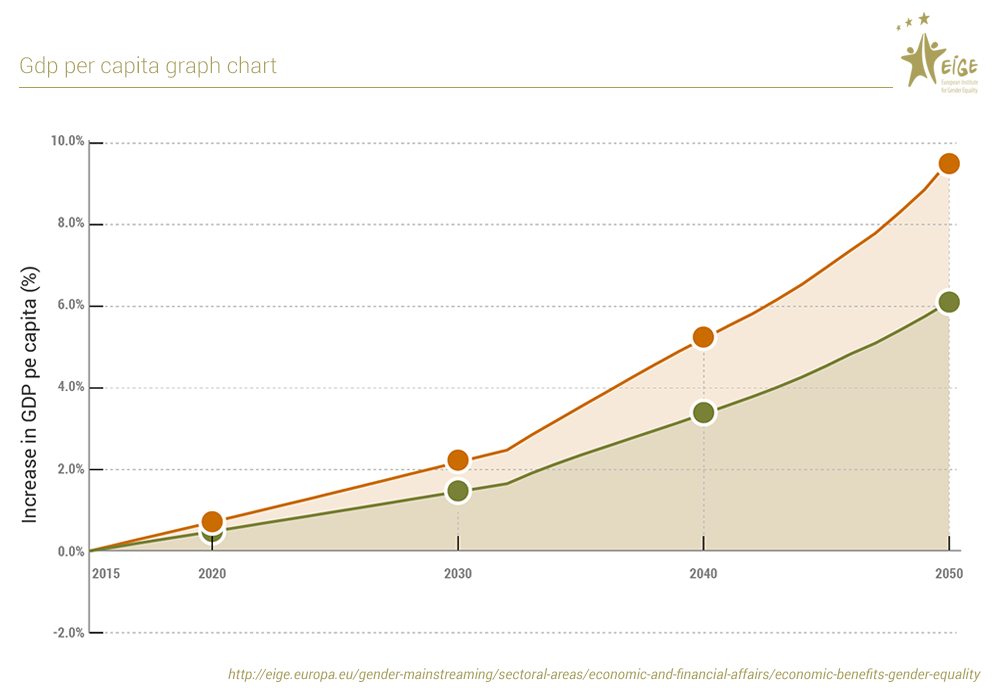Solution
Gender inequality is a highly complex and extensive social issue that is prevalent in every layer of society and industry. It is difficult to pinpoint a solution that would lead to a resolution. However, one of the most efficient methods to combat sexism has been education. The proposed solution of equality through education can be successful by promoting this fundamental human right for women rather than attempting to force change through condemnation.
Education, particularly for the public, allows establishing social norms which are engrained during the formative years of childhood. If respect and equality are taught, there is a more likely chance of such behaviors being exemplified into adulthood. It provides opportunities and eliminates barriers while reforming public beliefs. Education has a key role in altering the status quo as it influences the development of personality and fostering creative thinking. These ideas then guide public attitudes, perspectives, and actions, shaping people’s decision-making skills and ethical standards. The idea of using education as a tool for equality is meant to counter the current approaches to power relations and discrimination taught to many children (Rodrigues, 2015).
Distinguishing Features
Equality through education is a unique solution because it proposes a long-term and transformative change to the core of society. For gender equality to take place, the values of human civilization itself must be uprooted and reestablished with new beliefs. That is very difficult to do. Most public discussions and reforms focus on relatively short-term and reactive change through reform to legal codes, business structures, and media portrayals. While ultimately important in the overall struggle, these solutions only cover the surface of the issue and rarely result in the fundamental change (Winthrop, 2013). Meanwhile, education can redefine gender roles and perspectives, creating sustainable social values. The solution is long-term and may not produce results for decades if not generations. In the modern world of media coverage, it is understandable that people want quick solutions. However, time after time, it is evident that as a specific crisis is seemingly resolved, another appears based on the same core issues. Education can potentially effective over time if implemented on a large scale.
Operational Factors
Education for gender equality can be operationalized at the institutional and social level through the competent use of the public policy. Policies can promote and create actionable change through the areas of interventions, institutions, and interactions. Several factors drive successful policy adoption. The partnership amongst governments, stakeholders, and civil societies is key, with a long-term commitment from all partners. Furthermore, multi-sectoral interventions are required to resolve various issues of supply and demand to gender equality in education. An evidence-based strategic approach is required to advocate and gather support for further research and monitoring of the situation. All involved stakeholders must ensure proper financing is guaranteed to provide sustainable education. Reforms to education should be made by improving accessibility, quality, and value of gender equality education (Manion, n.d.).
Deliverables
Gender equality through education offers a variety of deliverables. Optimistically, it would introduce new core values to society as the younger generation begins to take positions of power and influence, thus dictating new norms. Another deliverable is the rise of women in various areas of industry and professional roles. Broader access to education provides better opportunities to create an equal workforce representation in different fields. Eventually, this will result in some level of gender parity as men and women would see a gradual establishment of balance in terms of positions of power, income, opportunities, and unchallenged access to basic human rights.
Benefits
Gender equality presents a variety of benefits that are not commonly considered. The secretary-general of the Organization for Economic Cooperation and Development is attributed the quote, “women are the most underutilized asset in the world’s economy” (Harvard Business Review, 2013, par. 3). Policy and economic achievements for women often result in overall benefits to the country.
Costs and Materials
Implementing large-scale education initiatives is a costly endeavor. It has associated direct and indirect expenses. Direct costs include school materials, uniforms, infrastructure, transport, salaries for staff, curriculum development amongst many others. Indirect costs may arise from implementing culturally sensitive practices, health control, monitoring of safety, and in some regions of the world, the opportunity cost of not offering education. There are a number of additional administrative costs as well which aim at the national capacity to reduce gender disparities and improve education access or quality. These expenses accumulate rapidly. As a baseline, UNICEF spends over $700 million annually on gender equality education worldwide, making only small progress (UNICEF, 2013). Various materials are required for teaching and learning purposes. These include education kits, textbooks, desks, technology. Furthermore, education centers have to be constructed with appropriate infrastructure and sanitation facilities. Materials include physical items as well as human capital (and associated resources) directed towards conducting research and advocating policy.
Benefits and Impacts on Society

Education plays a critical role in bridging the gap between society and the economy. Educational attainment helps to reduce gender gaps by assuring women are active in the workforce. This inherently changes the status of women in society by providing power and influence through professional and leadership roles. In turn, higher social status for women helps prevent child marriage, sexual abuse, and control over reproductive health. Empowered and educated women would lead to more balanced decision-making processes which are reflective of collective interests. Education and status help women to gain legal protection which guarantees rights are full-fledged members of society (Madgavkar, Ellingrud, & Krishnan, 2016).
Building upon the increased participation of women in the workforce, the population becomes included in financial and digital technology services. More women become increasingly active elements of the economy, controlling personal and family finances. The closing of the activity rate gap due to rising employment leads to increased national GDP and GDP per capita. Gender equality policies positively impact GDP, as studies show that educational attainment can lead to a 2.2% GDP increase in the EU and 5% in the United States which amounts to trillions of dollars in economic growth (European Institute for Gender Equality, n.d.). The widespread positive impact of gender equality through education serves as a convincing argument to consider it as a worthwhile initiative.

Conclusion
It is evident that gender equality is a challenging social aspect to overcome. It creates uncomfortable questions and, in many instances, leads to prejudice and abuse against women. Gender power relations and the distribution of roles have become a central topic of mainstream discussion. Despite tremendous steps taken to correct the balance, there continues to be a high level of disparity. It is a terrifying issue that leads to extinguished opportunities and an uphill battle for women. This poses an inherent question of who we are as a modern society, built on the principles of openness, opportunity, and Democracy if women are faced with so many closed doors.
This paper outlined the potentially influential role that education can have in changing the core foundation of social norms. It is an initiative that requires more than policy implementation and rewriting of school curriculums. It is a collective effort of society and various stakeholders, partners, governments, and organizations. The costs are significant but result in long-term socio-economic benefits and an invaluable paradigm shift in the social and cultural way of thought. If you are reading this, you can contribute in your own way. You can advocate and promote gender equality, particularly through education. You can behave appropriately and support those creating opportunities for women worldwide. You should use your right and engagement as a citizen to advance policies that implement meaningful changes. In the end, through dedication and cooperation on the correct path, gender equality can be achieved.
References
European Institute for Gender Equality. (n.d.). Economic benefits of gender equality in the European Union. Web.
Harvard Business Review. (2013). Women and the economics of equality. Web.
Madgavkar, A., Ellingrud, K., & Krishnan, M. (2016). The economic benefits of gender parity. Web.
Manion, C. (n.d.). Promoting gender equality in and through education: A public policy priority. Web.
Rodrigues, L. (2015). Education is the way to tackle inequality. Web.
UNICEF. (2013). Basic education and gender equality. Web.
Winthrop, R. (2013). Promoting gender equality through education in India. Web.